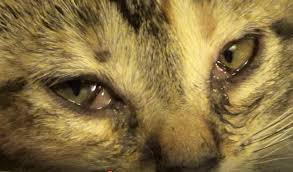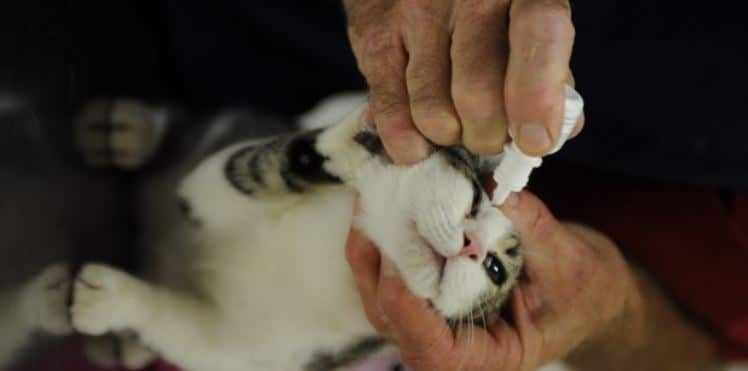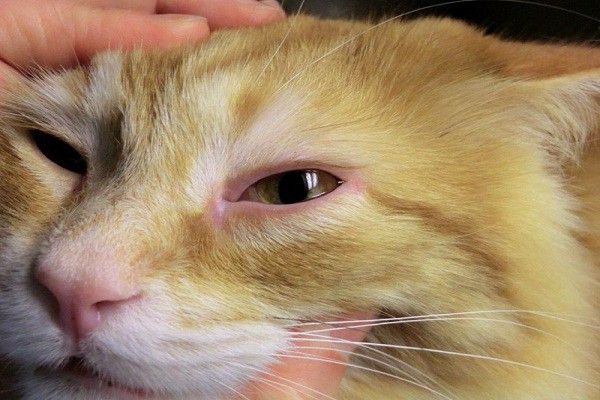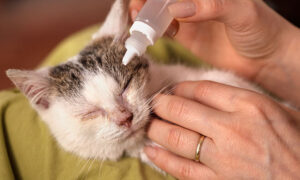Cat Eye Infection Treatment:Tips and Remedies
Cats are known for their beautiful eyes, but these delicate organs can be prone to infection. An eye infection in a cat can cause discomfort and pain, and if left untreated, it can lead to serious health issues. In this article, we will explore the causes of cat eye infections, the signs to look out for, and the different treatment options available to pet owners.
Introduction to Cat Eye Infections
Cats are known for their clean and hygienic nature, but they can still be susceptible to eye infections. These infections can be caused by a range of factors such as bacteria, viruses, or fungi. The most common type of eye infection in cats is conjunctivitis, which is an inflammation of the conjunctiva – the thin membrane that lines the inside of the eyelids and covers the white part of the eye.
Symptoms of Cat Eye Infections
The symptoms of a cat eye infection can vary depending on the type and severity of the infection. Some of the most common symptoms include:
Redness and Swelling
An infected eye may appear red, swollen, and inflamed. The swelling can sometimes be severe enough to cause the eyelids to close.
Discharge
A cat with an eye infection may have discharge coming from their eye. The discharge can be watery, thick, or pus-like.
Squinting
Squinting or blinking excessively can be a sign that a cat is experiencing discomfort or pain in their eye.
Cloudy or Hazy Eye
A cloudy or hazy appearance in a cat’s eye can be a sign of infection or other underlying health issues.
Loss of Appetite
An infected eye can cause discomfort, which can lead to a loss of appetite.

Cat Eye Infection Treatment: Tips and Remedies
Causes of Cat Eye Infections
There are several different causes of cat eye infections, including:
Bacteria
Bacterial infections are one of the most common causes of cat eye infections. Bacteria can enter the eye through a scratch or injury, or from the surrounding environment.
Viruses
Viruses such as feline herpesvirus can cause eye infections in cats. This virus is highly contagious and can be spread through contact with infected cats.
Fungi
Fungal infections are less common but can still cause eye infections in cats. Fungi can enter the eye through a wound or injury.
Allergies
Allergies to environmental factors such as dust or pollen can cause eye infections in cats.
Treatment Options for Cat Eye Infections
The treatment for a cat eye infection will depend on the underlying cause and severity of the infection. Some common treatment options include:
Antibiotics
If the infection is caused by bacteria, antibiotics may be prescribed by a veterinarian. The antibiotics can be administered orally or as an eye drop or ointment.
Antiviral Medication
If the infection is caused by a virus such as feline herpesvirus, antiviral medication may be prescribed.
Fungal Medication
If the infection is caused by a fungus, antifungal medication may be prescribed.
Cleaning and Flushing
Cleaning and flushing the eye with a sterile solution can help remove discharge and debris.
Warm Compresses
Applying warm compresses to the affected eye can help reduce swelling and inflammation.

Cat Eye Infection Treatment: Tips and Remedies
Home Remedies for Cat Eye Infections
In addition to traditional treatment options, there are also some home remedies that pet owners can try to help alleviate the symptoms of a cat eye infection. However, it’s important to consult with a veterinarian before trying any home remedies, as some can do more harm than good.
Saline Solution
Rinsing the eye with a saline solution can help remove discharge and debris.
Chamomile Tea
Chamomile tea can help soothe inflammation and reduce swelling. Brew a cup of chamomile tea, let it cool down, and then use a clean cloth to apply the tea to the affected eye.
Aloe Vera
Aloe vera has anti-inflammatory properties and can help reduce swelling and redness. Apply a small amount of aloe vera gel to a clean cloth and gently apply it to the affected eye.
Warm Tea Bags
Applying warm tea bags to the affected eye can help reduce swelling and inflammation. Brew a cup of tea, let the tea bag cool down, and then place it on the affected eye for a few minutes.
Prevention of Cat Eye Infections
Preventing a cat eye infection is always better than treating one. Here are some tips to help prevent cat eye infections:
Keep the Environment Clean
Keeping your cat’s environment clean can help reduce the risk of infection. Regularly clean your cat’s litter box, food and water bowls, and bedding.
Vaccination
Ensure that your cat is up to date with all their vaccinations to help protect them from viruses that can cause eye infections.
Regular Check-Ups
Take your cat for regular check-ups with a veterinarian to ensure that they are healthy and any underlying health issues are detected and treated early.
Conclusion
Cat eye infections can be uncomfortable and painful for your feline friend, but with proper treatment and care, they can be easily managed. Pet owners should be aware of the signs and symptoms of a cat eye infection and take preventative measures to reduce the risk of infection. Remember to always consult with a veterinarian before trying any home remedies, and follow their recommended treatment plan to ensure the best outcome for your cat’s health.
FAQs
- Can a cat eye infection spread to humans?
- What can cause a cat eye infection?
- How can I tell if my cat has an eye infection?
- Can I use human eye drops for my cat’s eye infection?
- How long does it take for a cat eye infection to heal?
Read More:Clean Cat Ears Tips: Keep Your Feline’s Ears Clean and Healthy




















